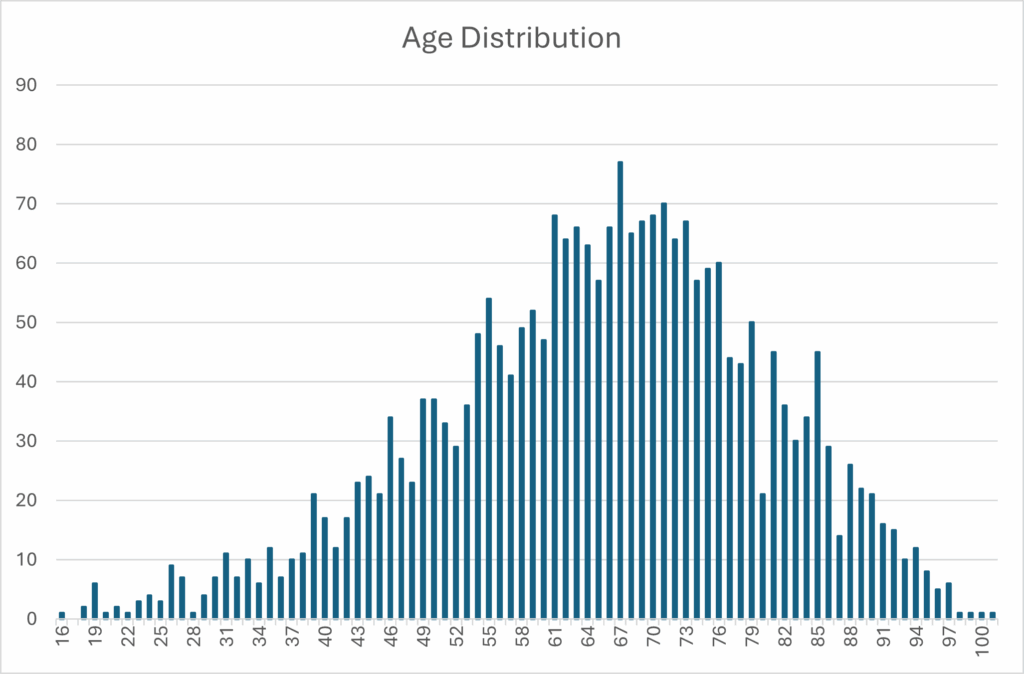Dr. Bass established the UTK Donated Skeletal Collection in 1981. Every individual donated to the skeletal collection is used to educate, train, and provide a resource for research in forensic taphonomy. In addition to the research at our outdoor facility, the skeletal collection has become a major resource for studying modern Americans.
More than 2,500 individuals are curated in the collection with birth years ranging from 1902 to 2019 and encompasses all adult age ranges and individuals of both sexes. There are also cremains (n=209) as part of the collection and available for research.


All skeletal remains housed in the collection are donated to the Forensic Anthropology Center from an individual prior to death or the family of a deceased individual (Refer to Body Donation for more information.)
Individuals within the collection represent nearly every state with a majority from Tennessee and the Southeastern United States. Most individuals within the collection have known age, sex, cause of death, and body mass information. Additionally, all individuals within the collection have associated anthropometric data, which are added to the Forensic Data Bank housed at the University of Tennessee. This Data Bank is a major source of data for FORDISC, a discriminant function program developed by Richard Jantz and Stephen Ousley.
Since 1999, the Forensic Anthropology Center has added extensive information on donors to the collection including health, occupation, socio-economic status, birth information, and habitual activities. The additional information has provided new opportunities to determine how modern Americans are changing and to study specific disease processes. Other resources available include hair, nails and blood samples for donors received between 2008 and 2020.
All skeletal remains are curated and maintained by the Forensic Anthropology Center within the Department of Anthropology. The collection is stored in a well-protected environment that is continually monitored. See Our Facilities page for more information. Research requests using the collection can be found here.
